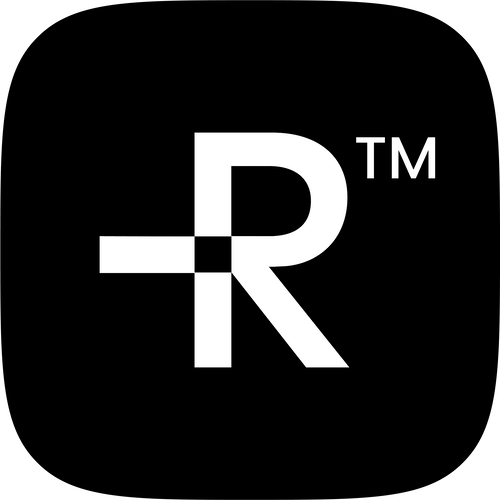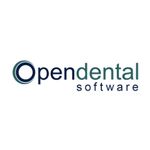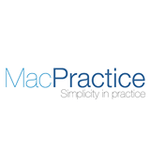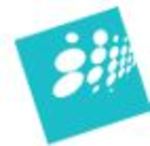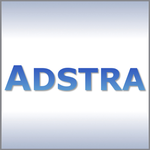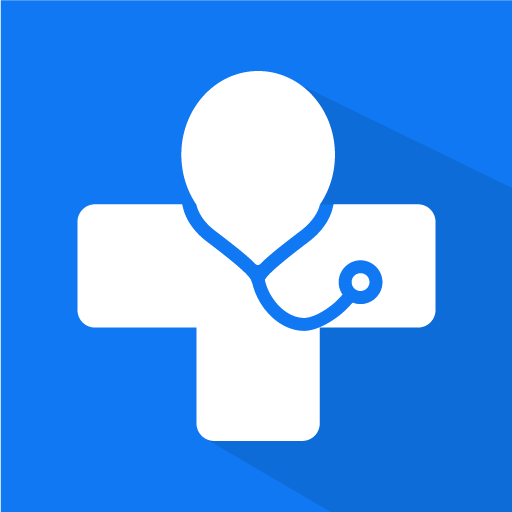What Is Dental Charting Software?
Dental charting software is a cutting-edge technical solution that streamlines the dental charting process by providing dentists with a digital platform for precisely recording and storing patient data. This program successfully substitutes old paper charts, making it an indispensable tool for any modern dentistry practice. One of the primary functions of dental charting software is the capacity to generate digital charts for each patient, allowing dentists to quickly maintain and update their medical information.
This reduces the need for manual record-keeping, lowering the possibility of human error and resulting in a more efficient process. Furthermore, dental charting software includes excellent visualization tools that allow dentists to make detailed diagrams and photographs of their patients' teeth and oral tissues. This improves understanding of the patient's oral health and facilitates appropriate diagnosis and treatment planning.
Furthermore, this software enables dentists to securely keep and access patient records, minimizing the possibility of traditional charts becoming forgotten or stolen. This protects the privacy and security of patient information, which is critical in the healthcare business. In addition to these functions, several dental charting software packages provide appointment scheduling, treatment planning, and billing management, making them a complete solution for dental businesses.
Investing in dental charting software can provide various advantages to dental practices, including increased productivity, accuracy, and organization. It also improves the entire patient experience by minimizing wait times and ensuring a smoother visit. When shopping for dental charting software, consider user-friendliness, interoperability with existing systems, and customer support. Dentists may use the proper software to save time, improve patient care, and grow their practice.
What Are The Recent Trends In Dental Charting Software?
In recent years, dental charting software has advanced significantly to increase the efficiency and accuracy of dental record-keeping. As technology advances, a few important factors are influencing the landscape of dental charting software. First, there has been a shift toward cloud-based solutions. This enables real-time access to patient charts from any device with an internet connection, making it easier for dentists to work on the move and collaborate with team members.
Cloud-based software also provides increased security and data backup, giving dentists and patients piece of mind. Another development is the integration of artificial intelligence (AI) into dental charting software. AI systems can now evaluate patient data and spot possible issues like cavities or gum disease. This not only increases charting accuracy, but it also allows dentists to address any concerns ahead of time.
Mobile apps are also gaining traction in the dental charting software market. With the growing popularity of smartphones, numerous software vendors are developing mobile apps that enable dentists to view patient data, take notes, and even shoot photos directly from their phone or tablet. Furthermore, there is an increasing emphasis on patient interaction and experience in dental charting software.
Patient portals, appointment reminders, and online appointment booking are becoming increasingly widespread, making it easier for patients to stay in touch with their dentists. Finally, there is a push for customisable and user-friendly interfaces. Charting software now provides highly intuitive interfaces that can be customized to meet the unique needs and preferences of each dental office. This enables dentists to shorten their charting procedures and spend more time on patient care.
Benefits Of Using Dental Charting Software
Dental charting software is a useful tool for dental clinics who want to streamline record-keeping and improve patient care. This program enables dentists to track patient information, treatment plans, and progress digitally, replacing the old paper-based system. Here are some of the main advantages of using dental charting software.
1. Improved Accuracy And Efficiency: One of the primary benefits of adopting dental charting software is the increased accuracy and efficiency it provides over traditional paper-based charting. Digital charting leaves less possibility for error because the program can automatically input data and execute computations. This not only saves time, but also lowers the likelihood of inaccuracies in patient records.
2. Comprehensive Patient Records: Using dental charting software, practitioners can produce digital patient records. These documents may include medical history, treatment plans, X-rays, and progress notes. Having all of this information in one location can help team members communicate and collaborate better, resulting in better patient outcomes.
3. Easy Obtain To Patient Information: Dental charting software allows you to obtain patient records and charts with a few clicks. This eliminates the need for physical files and enables for the rapid retrieval of information as needed. It also allows dentists and staff to access patient information remotely, giving them more flexibility and convenience when handling patient data.
4. Increased Productivity: Dental charting software can help dental businesses become more productive by automating chores like data entry and calculations. As a result, dentists can devote more time to providing exceptional treatment to their patients. Additionally, digital charting can lessen the administrative burden, allowing personnel to devote more time to other critical activities.
5. Improved Treatment Planning: Dental charting software includes capabilities such as treatment planning and progress tracking, making it easier for dentists to monitor the progress of their patients' treatments. This program also enables the construction of graphic treatment plans, which can be shared with patients, resulting in improved communication and understanding between the dentist and the patient.
6. Improved Patient Experience: Dental charting software enables patients to have a more smooth experience. Digital records enable dentists to instantly access patient information, resulting in reduced wait times and more efficient sessions. Furthermore, patient data can be securely preserved, giving patients peace of mind knowing their information is secure.
Important Factors To Consider While Purchasing Dental Charting Software?
When it comes to choosing dental charting software, there are various variables to consider to ensure that you get the finest option for your business. As a professional content writer, I studied and created a list of crucial considerations that every customer should consider while making their selection. So, let us take a deeper look at what these factors are.
1. Features And Functionality: The first and most important consideration is the features and functionality of the dental charting software. It is critical to establish your practice's unique demands and requirements, such as clinical notes, treatment planning, scheduling, and patient communication. Make sure you choose software that includes all of the necessary functions and is user-friendly.
2. Cloud-Based vs. On-Premise: Another important factor to consider is whether you choose cloud-based or on-premise software. Cloud-based software provides remote access, automatic upgrades, and safe data storage, whilst on-premise software gives you full control over your data and security. Decide based on your preferences and budget.
3. Integration And Compatibility: You must confirm that the dental charting software you are evaluating is compatible with your existing office systems and workflows. Whether it's your practice management software, billing software, or imaging systems, seek for smooth connection to eliminate data errors.
4. Training And Support: One of the most overlooked considerations when acquiring software is the degree of training and support available. Inquire about the training procedure and ongoing assistance from the software provider. It is critical to ensure a smooth transition and availability to assistance in the event of any technical challenges.
5. Cost And ROI: While cost should not be the sole decision factor, it is critical to consider your budget when choosing dental charting software. Look for software vendors with transparent pricing and a clear grasp of the software's return on investment (ROI).
6. Security And Compliance: With the growing threat of cyber-attacks, it is critical to prioritize the security and compliance elements of dental charting software. Look for HIPAA-compliant software that includes proper security measures to protect your patient's data. Overall, while selecting dental charting software, you should evaluate your practice's specific requirements, compatibility with other systems, training and support, pricing, and security. By thoroughly considering these aspects, you will be able to make an informed decision and select the finest software solution for your clinic.
What Are The Key Features To Look For In Dental Charting Software?
When selecting the best dental charting software, there are several critical elements to examine to ensure that the program fulfills the demands of your clinic. From efficiency to accuracy, here are the main aspects you should consider while assessing dental charting software options:
1. Comprehensive Charting Capabilities: The most crucial aspect of any dental charting software is the ability to generate complete and accurate patient charts. Look for software that has a wide range of charting features, such as the ability to record existing conditions, treatment plans, progress notes, and more.
2. Integration With Practice Management Systems: Efficiency is essential in any dental practice, and selecting software that connects easily with your current practice management system will save time and prevent errors. Look for dental charting software that is compatible with major practice management systems and facilitates the transfer of patient information.
3. Customizable Templates: Each dental office is unique, as are the charting requirements for each patient. Look for software that includes configurable templates, which will allow you to personalize your charts to the exact procedures and treatments used in your practice.
4. Imaging And Radiograph Integration: In dentistry, images are an important aspect of patient care and treatment planning. Look for dental charting software that integrates with imaging and radiograph systems, allowing for the easy input of images into patient charts.
5. Secure Cloud Storage: In today's digital age, patient information must be secure and private. Look for dental charting software that includes secure cloud storage options, giving you peace of mind that important patient information is safe.
6. Automatic Updates: Dental techniques and technologies are always improving, therefore it's critical to have up-to-date charts with the most recent information. Look for software that provides automatic updates, ensuring that you are always using the most recent version.
7. Accessibility: Since many dental practices have gone paperless, having access to patient charts from anywhere is critical. Look for dental charting software that is accessible from any device with an internet connection, allowing for easy patient care and monitoring from anywhere.
Why Do Businesses Need Dental Charting Software?
Dental charting software is an essential tool for dental enterprises, offering numerous benefits that improve productivity, accuracy, and overall patient care. This modern technology makes it easier to create and manage dental charts, allowing dentists and their teams to focus on what is most important: their patients. In this buyer's guide, we'll look at the top reasons why every dental practice should invest in dental charting software.
1. Effective And Accurate: Charting Manual dental charting can be time consuming and error-prone. Dental charting software allows businesses to save patient information and create comprehensive digital records with a few clicks. This not only saves time, but also ensures chart accuracy and consistency, lowering the likelihood of errors and conflicts.
2. Digital Recordkeeping And accessibility: Dental charting software reduces the need for paper charts, making it a more environmentally friendly and space-efficient alternative. Digital records also make it easier to retrieve patient information from anywhere and at any time, which improves workflow and patient care. Furthermore, secure cloud-based storage allows practices to assure the safety and privacy of patient data.
3. Improved Treatment Planning: Dental charting software supports the integration of diagnostic instruments and photographs, which can help with treatment planning and case presentation. Dentists can design more complete treatment plans and better understand their patients' oral health needs if they have access to all necessary information in one place.
4. Promotes Communication And Collaboration: Dental charting software has a key advantage in that it allows you to share and access digital charts and patient information inside your business and between experts. This streamlined communication and collaboration improves overall treatment quality, resulting in better patient outcomes.
5. Simplifies: Billing and Insurance Claims Dental charting software can be integrated with billing and insurance systems, making it easier and faster to generate correct bills and file insurance claims. This not only saves time but also minimizes the possibility of errors, resulting in a more efficient reimbursement procedure and increased cash flow for the clinic.
How Much Time Is Required To Implement Dental Charting Software?
The time required to establish dental charting software varies according to a few main parameters. These factors include the size and complexity of your practice, the type of software you use, and the degree of training and support given by the software vendor. Implementation times for smaller firms with basic workflows might range from a few days to a week.
This includes configuring the software, importing patient data, and modifying templates and settings to meet your individual requirements. Larger practices with several providers and complicated features may take longer to deploy. This could take two to four weeks or longer, depending on whether extra training and setup time are required to guarantee easy integration and optimal software utilization.
The type of software you use is a significant consideration. Cloud-based solutions can usually be set up and accessed fast, whereas on-premise software may take longer owing to installation and compatibility requirements. It is also critical to consider the degree of training and support offered by the software manufacturer. A user-friendly interface and extensive training materials can greatly shorten the implementation time.
Some vendors additionally provide customized training and support to help you get up and running quickly. In general, the time necessary to adopt dental charting software is small when compared to the long-term benefits it can provide for your office. By streamlining charting and record-keeping operations, minimizing errors, and increasing efficiency, the program can save you time and improve patient care over time.
What Is The Level Of Customization Available In Dental Charting Software?
When it comes to dental charting software, customization plays a crucial role in meeting the unique needs of different dental practices. The level of customization available in these software programs can vary greatly, so it's important to understand what options are available when evaluating different solutions. One factor to consider is the ability to customize the layout of the dental chart.
This includes the types of charting symbols, colors, and icons used, as well as the ability to create custom templates for specific procedures or patient conditions. This allows for a more efficient and streamlined charting process, as well as a personalized experience for each practice. Another aspect of customization is the ability to add or remove features based on the needs of the practice.
For example, some software may offer additional modules or tools for tasks such as treatment planning or patient education, which can be chosen or skipped depending on the practice's preferences. Integration with other software and systems is also an important consideration for customization. Dental charting software should allow for seamless integration with other practice management systems, such as scheduling and billing, to ensure a cohesive and efficient workflow.
In addition, the level of customization available in the reporting and analytics features should not be overlooked. This allows practices to generate tailored reports on patient statistics, treatment outcomes, and financial data to gain valuable insights and make informed decisions.
Finally, customization should extend to the user interface as well. Dental charting software with the ability to customize the user interface can greatly improve user experience and efficiency. This includes options for personalizing shortcut keys, menus, and preferences. In summary, the level of customization available in dental charting software can greatly impact its usability and effectiveness for a dental practice. Asking about these customization options and evaluating them thoroughly can help in selecting the best software for your practice's specific needs.
Which Industries can benefit the most from Dental Charting Software?
Dental charting software is a highly adaptable and effective tool that can aid a variety of industries beyond dentistry. While it is primarily intended for use in dentistry practices, it has applications in a variety of other industries. In this buyer's guide, we'll look at the top sectors that can profit the most from dental charting software.
1. Dental Practices: It goes without saying that dental charting software is widely utilized in dental practices. It enables dentists and their staff to effectively record and manage patient data, treatment plans, and progress. It also improves team communication and teamwork, which leads to better patient care.
2. Healthcare Facilities: Dental charting software can be useful in hospitals, clinics, and other healthcare settings. Many healthcare providers include dental services as part of their overall care, and having access to dental charting software can help them streamline operations and enhance patient results.
3. Insurance Firms: Dental insurance firms can utilize dental charting software to handle claims and maintain patient data. This allows them to precisely determine coverage and limit the likelihood of fraudulent claims.
4. Research And Academia: Dental charting software can also be beneficial in research and academic settings. It enables researchers to quickly access and analyse data for studies and clinical trials. Furthermore, dentistry schools can utilize it to educate and monitor their students' progress.
5. Government And Military: Government agencies and military groups frequently maintain their own dental clinics to provide oral treatment to their employees. Dental charting software can help with efficiency, accuracy, and patient care in various circumstances. Finally, while dental charting software is largely utilized in dental practices, it has far-reaching uses.
Conclusion
To summarize, using the correct dental charting software can significantly increase the productivity and accuracy of your dental office. When making your decision, consider user friendliness, interoperability with existing systems, security features, and customer support. Before making a final purchase, we recommend looking at demos or free samples of the product to acquire a better knowledge of its features and functionality.
It is also advisable to solicit feedback from other dental professionals who have used the program to ensure that it matches your specific requirements. Remember to think about your budget and the pricing possibilities available from different providers. While some software may be more expensive at first, it may save money in the long run due to increased efficiency and fewer errors.
Finally, find a reliable and established service that provides regular updates and customer support to guarantee that your software is always up to date and problem-free. With careful analysis and research, you may choose the ideal dental charting software for your office, boosting efficiency and patient care.



